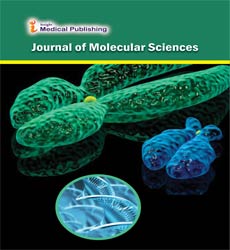A Study on Evaluation of Various Tongue Patterns in North Indian Population and a Working Classification System suggested a pilot Study
Abstract
Tongue is a vital organ which performs multiple actions such as articulation of speech, perception of taste, and formation of food bolus. The tongue is the only internal organ which can be easily drawn out and displayed for inspection and palpation purposes. By means of its shape and texture, its aspect and color analyzed in a particular moment, this organ is helpful due to its exposed portion comprising information with visible differences from one individual to another, and may be easily called and used as a “lingual impression”. The human tongue is encased within the oral cavity, where it lies isolated from and protected against the external environment, just as the palatine folds do, unlike the other notorious elements employed in human identification. Hence, we, in this original study are describing the varied tongue patterns emphasizing the uniqueness of tongue. Also we have included certain morphological features for assessment like tongue size, shape, color, texture, margins and tip which has not been mentioned in the literature so far. Considering these criteria, we have formulated a simple working classification system of tongue patterns.
AIM AND OBJECTIVE
1. To analyze the shape and texture of tongue.
2. To analyze the papillae on dorsal surface of tongue
3. To analyze the margins of the tongue.
4. To compare the shape, texture, papillae and margins of tongue between males and females.
5. To suggest a working classification of the tongue print patterns according to the above mentioned features.
RESULT AND OBSERVATION
The most common pattern seen in males was patternless branching followed by v shaped fissures. Geographic tongue print pattern was noted in four male subjects. The most common pattern seen in females was patternless branching followed by vertical fissures and v shaped fissures. Also, five males and four females had scalloped tongue margins. Seven female and six male subjects had prominent papillations on dorsal surface of tongue. Nine female subjects had broad and short tongue and six female subjects had narrow and long tongue. 10 male subjects had broad and short tongue and five had long and narrow tongue. Also, another feature observed was in female subjects who had pointed tip of tongue compared to blunt tip of male subjects. Three male and four female subjects had plaqued tongue texture. Also one female subject had cleft tongue but not syndrome associated. Five male and three female subjects had comparatively large tongue.
CONCLUSION
Forensic odontology analyzes dental evidence in the concern of justice. The data obtained can help in identifying individual and providing relevant information for legal proceeding. The human tongue is unique and delivers relevant information about shape, size, color, texture, margins and is suitable for forensic case identification. It can be examined simply, making it valid evidence without hereditary dependence as no two individuals have identical tongue print patterns.
Open Access Journals
- Aquaculture & Veterinary Science
- Chemistry & Chemical Sciences
- Clinical Sciences
- Engineering
- General Science
- Genetics & Molecular Biology
- Health Care & Nursing
- Immunology & Microbiology
- Materials Science
- Mathematics & Physics
- Medical Sciences
- Neurology & Psychiatry
- Oncology & Cancer Science
- Pharmaceutical Sciences
